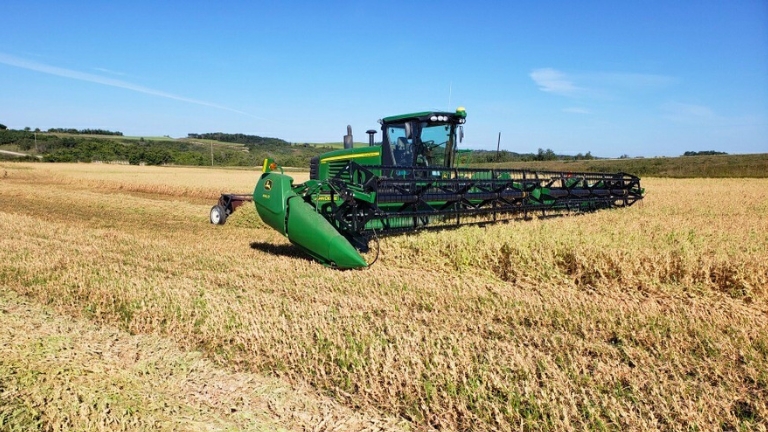2024 Harvest Crop Report


2024 Harvest Crop Report – Oat and Pulse Market
From the desk of Mike Gallais, Director of Procurement
It’s hard to believe that we are in the middle of harvest already. The summer has flown by.
While the crops were growing, Avena was busy with field-scale Sustainability Impact Projects. The projects are in partnership with farmers, commercial customers and Collective Impact Ag. At Avena’s Customer and Farmer Appreciation Day (CAFAD) in July, farm hosts provided tours of intercropping and on-field pollinator strips, demonstrating regenerative agriculture in action. Canadian Prairie farms have long been world leaders with regenerative agriculture practices (low-tillage, crop rotation), but there’s still so much more we can do.
If I had written this report a month ago, when moisture was very good in most areas on the Prairies, I would have advised you to hold on to your hats and prepare for a bin-buster harvest. But Mother Nature had a different idea. She shut the rain tap off and turned up the heat for six weeks.
The result of the hot, dry weeks was that what had been a tall and lush stand of oats did not develop well. Some seeds never developed at all. Those that did were skinny (less plump seeds equals lower yield). When the seeds mature fast in the heat, the plant produces less starch and bushel weight ends up lighter. We are seeing smaller yields and very skinny, light bushel weights for oats, which thrive under cooler, wetter conditions.
The oat crop yields have taken a hair cut in July and August. Oats have been harvested only in the non-typical oat growing areas of Saskatchewan so far. Results are not good – very light bushel weights and too dry to mill.
The pulse crops in our catch basin are mostly off the fields, with yields slightly less than average and very good quality. The heat blast reduced the size of peas.
Chickpeas thrived through the heat. They were well established by end of June and hot, dry weather meant low disease pressure. I am hearing that yields are good and quality is excellent but the seeds are a bit smaller than usual.
After touring Avena Purity Protocol contracted acres in August, we can report that oat crop potential is all over the place. Earlier seeded crops and sub-soil moisture are key factors for oats. Every once in a while the later seeded crops do better than the earlier ones. This could be one of those years, due to the good rains in June.
Oat harvest will be in full swing by early September, on par seasonally. Oat quality is expected to be less than average, with wide variations. Please reach out to our team with any questions about the crops or this year’s harvest.